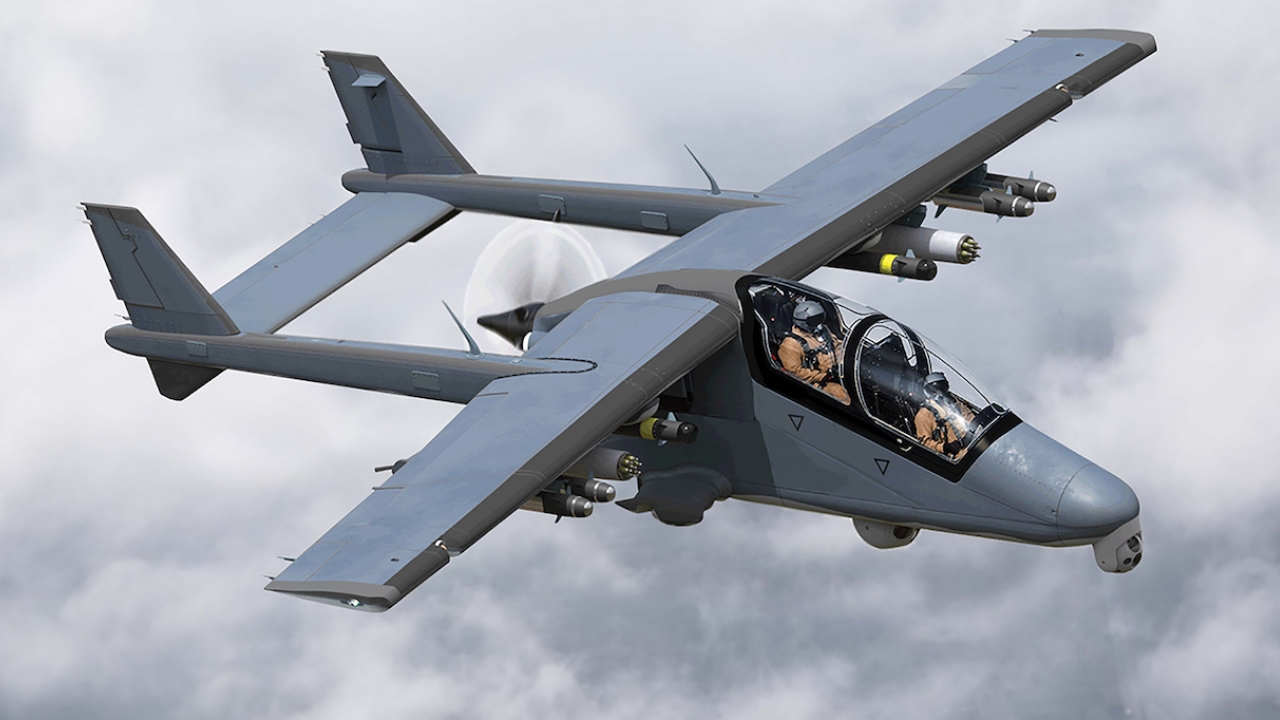AHRLAC back to business
Production of Paramount Aerospace Industries’ ground-breaking AHRLAC is about to be ramped up as the company prepares to emerge from the final stages of South Africa’s business rescue process.

Paramount says that it already has orders for the multi-functional aircraft.
Future prospects for Africa’s first indigenously designed and manufactured combat aircraft have improved as it nears the end of almost 18 months in business rescue. Alan Dron reports.
The process saw external specialists appointed to restructure a company at risk of failing, while it was protected from creditors.
The turboprop Advanced High Performance Reconnaissance Light Aircraft (AHRLAC) is designed as an airborne command post, integrating a variety of surveillance and intelligence-gathering equipment.
It is designed to be readily reconfigurable for multiple missions with sensors, such as radars and electro-optical systems, built into a unit incorporated into the aircraft’s lower fuselage.
Proposed duties include reconnaissance, light strike and armed overwatch of convoys or troops.
An armed variant of AHRLAC, known as Mwari, has also been developed and is designed to incorporate advanced intelligence, surveillance and reconnaissance (ISR) capabilities, together with weapons systems. It is designed to have operating costs of less than $1,000 per hour, making it cheaper than helicopters and most other fixed-wing competitors.
Weapons options include guided munitions, guided rockets, air-to-ground missiles and a cannon pod.
The AHRLAC was conceived by Aerosud and developed with Paramount funding through a joint venture, Aerospace Development Corporation. (ADC).
However, a dispute between ADC’s shareholders saw the programme enter business rescue in February 2019.
In October 2019, a rescue plan for the AHRLAC was adopted, under which Paramount Aerospace Industries acquired the businesses of ADC and its subsidiaries, including Aerosud Innovation Centre.
This led to the reopening of the state-of-the-art factory at Wonderboom Airport. This has now been operational for several months, with around 85% of ADC’s staff being retained.
Manufacturing is being ramped up for the delivery of production aircraft, according to a spokesperson.
Paramount has previously announced that it has received orders for the AHRLAC, but declines to give details of the clients’ identities or the number of aircraft ordered, citing contractual confidentiality.
“We have been encouraged by the global interest in the aircraft and we look forward to making new customer announcements in the near future,” said Alison Crooks, CEO of Paramount Industrial Holdings.
“Paramount’s decision, more than a decade ago, to fund the development of the AHRLAC aircraft was a matter of national pride and came at a time when the local aerospace industry was searching for a project that would invigorate the sector. We’re grateful that this strategic programme has now been secured and that we can now focus on a brighter future.”
Almost ZAR 1 billion ($58 million) has been committed to the project so far, with more scheduled to be provided over the coming months as production gears up.
The first aircraft are now starting to emerge from Paramount’s state-of-the-art facilities at Wonderboom Airport.
One potential application for the AHRLAC/Mwari is the US Special Operations Command (SOCOM) requirement for an ‘armed overwatch’ platform that can handle reconnaissance or counter-insurgency missions more cost-effectively than a highly expensive aircraft such as the F-16 or F-35.
Diverting high-end aircraft to tackle bands of armed guerrillas is regarded as a waste of money and flying hours when such aircraft are increasingly required for training against potential ‘near peer’ adversaries.
SOCOM is said to be looking for up to 75 examples of a new aircraft over the next five to seven years to handle the armed overwatch mission. The aircraft may be supplied to allied nations, rather than being operated by the US.
US company, Leidos, is prime contractor, with Paramount Group USA and Vertex Aerospace as lead partners, in offering a version of the AHRLAC/Mwari under the name Bronco II. The original OV-10 Bronco was a Vietnam War-era counter-insurgency aircraft.
Three other aircraft – the Beechcraft AT-6E Wolverine, the Sierra Nevada/Embraer A-29 Super Tucano, and Air Tractor AT-208U – are competing for the contract. However, there is some opposition from members of the US Senate to the programme.
Stay up to date
Subscribe to the free Times Aerospace newsletter and receive the latest content every week. We'll never share your email address.

